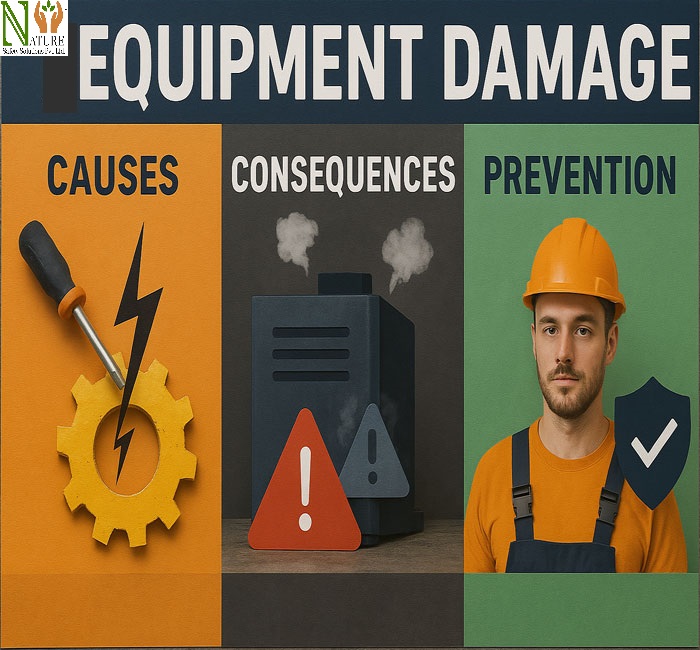In any workplace-whether industrial, construction, manufacturing, or even office environments-equipment plays a vital role in productivity, efficiency, and safety. But when equipment is damaged, it doesn’t just affect the machine.
It can lead to costly repairs, safety risks, delays, and even serious accidents. Understanding the causes of equipment damage, the impact it can have, and how to prevent it is key to maintaining a safe and productive workplace.

Common Causes of Equipment Damage
1. Improper Use
Using equipment for tasks it wasn’t designed for is one of the leading causes of damage. Overloading machines, skipping instructions, or forcing tools beyond their limits weakens them over time or causes immediate failure.
2. Poor Maintenance
Lack of routine inspections, cleaning, or part replacement increases wear and tear. Dirt, debris, and old lubricants can cause moving parts to grind or overheat.
3. Human Error
Operator mistakes—such as incorrect setup, forgetting safety checks, or using the wrong tools—can lead to accidental breakdowns or irreversible damage.
4. Environmental Conditions
Exposing equipment to extreme temperatures, moisture, corrosive chemicals, or dust can weaken components and accelerate deterioration.
5. Mechanical Failures
Worn-out parts, outdated systems, and undetected stress points can suddenly break under pressure, especially without regular servicing.
6. Inadequate Training
When workers aren’t properly trained on how to operate or care for equipment, they’re more likely to misuse it—even unintentionally.
Consequences of Equipment Damage
1. Financial Loss
Repairing or replacing damaged equipment is expensive. In some cases, damage to one machine can also harm connected systems, multiplying the cost.
2. Downtime and Delays
Broken equipment can bring entire operations to a halt. This leads to missed deadlines, lower productivity, and disappointed clients.
3. Safety Hazards
Damaged equipment is unpredictable. It can malfunction, jam, or collapse—putting workers at risk of injury or death.
4. Lowered Efficiency
Even if damaged equipment still works, it often performs poorly. This can result in substandard work, increased fuel or power use, and wasted materials.
5. Damage to Reputation
Frequent breakdowns or delivery delays due to equipment problems can impact customer trust and the company’s professional image.
Prevention Strategies
1. Regular Maintenance Schedules
Follow manufacturer-recommended maintenance intervals. Conduct routine checks for wear, alignment, lubrication, and safety features.
2. Operator Training
Ensure all users are properly trained to operate equipment safely and efficiently. Training should cover start-up, use, cleaning, and shutdown procedures.
3. Clear Usage Guidelines
Label equipment with correct load limits, temperature ranges, and safety instructions. Post visual reminders near machines if necessary.
4. Environmental Protection
Protect machines from harsh weather, chemical exposure, and excess dust. Use covers, enclosures, or ventilation systems as needed.
5. Report and Repair Early Signs
Encourage workers to report unusual noises, vibrations, or performance issues immediately. Fixing minor problems early can prevent bigger failures.
6. Use the Right Tool for the Job
Never substitute tools or machines for tasks they weren’t designed for. The right equipment reduces strain and extends lifespan.
Also Read:
